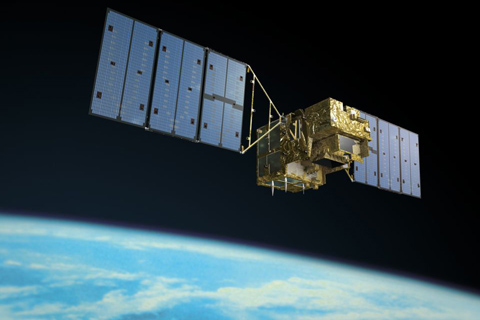About Greenhouse gases Observing SATellite "IBUKI" (GOSAT)

|
"IBUKI": Global efforts to protect the environment.Global warming has become a very serious issue for human beings. Scientists have suggested that, at the rate the Earth’s temperature is rising, an extreme form of global climate change could occur in a few centuries. Launch date: January 23, 2009 |
|---|
Project Topics
indexMassive bushfires in Australia seen from Space
|
Australia has naturally faced many droughts and bushfires, but conditions have been unusually severe this time. Sometime around September 2019, the bushfires continuously occurred around the state of New South Wales in southeast Australia. The fires had been spreading on a larger scale, and a number of massive fires had merged into a "Mega Fire" that was out of control. The fires are unlikely to end entirely even at the end of January 2020. Figure 1 (left) Standardized Precipitation In... |
Press Release
indexCharacteristics of Greenhouse gases Observing SATellite "IBUKI" (GOSAT)
Characteristics of greenhouse gas observation utilizing a satellite
|
The concentration of the greenhouse gases has been observed at observation sites on the ground and by aircrafts. However, there are only 348 sites (as of January 2013) and these sites place a disproportionate emphasis on a few areas. “IBUKI” is able to measure the concentration of greenhouse gases such as CO2 and CH4 over almost the entire surface of the earth at equal intervals every 3 days from the orbit traveling around the earth in approx. 100 minutes. This has made it possible to increase the observation points exponentially than before as well as obtaining the data over the region where we had no data until now. And it has been able to improve the estimation accuracy of the net flux of CO2 by up to 40% until now through the use of these data. The data obtained is anybody can use these data if they register as well as providing to governmental Institutions and scientists of various countries. |

|
|---|
Major Characteristics
| International Designation Code | 2009-002A |
|---|---|
| Launch Date | 12:54, January 23, 2009 (JST) |
| Launch Vehicle | H-IIA Launch Vehicle No.15 |
| Location | Tanegashima Space Center |
| Shape | 2 box shape with wing-type solar array paddles 3.7 m x 1.8 m X 2.0 m (Depth) (Length between the tips of the paddles: 13.7 m) |
| Weight | Approx. 1,750kg |
| Orbiter | Sun-Synchronous Sub-Recurrent |
| Altitude | Approx. 667km |
| Inclination | Approx. 98 degrees |
| Period | Approx. 98 minutes |
Contents

- Aug. 6, 2008
- To Preserve Our Earth
